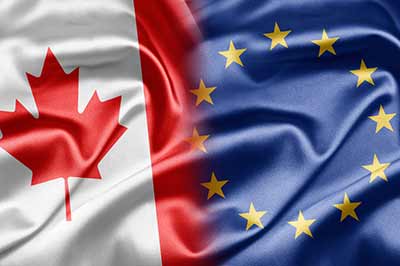The prospect of the European Central Bank introducing additional stimulus in June left the Euro in a weaker position on Monday and the EUR/CAD pairing faltered during North American trading.
On Friday the Canadian Dollar posted widespread gains following the release of disappointing Canadian employment data.
The jobs report showed that the Canadian economy lost 28,900 positions in April rather than gaining the 13,500 jobs expected.
Canada’s unemployment rate held at 6.9 per cent, as anticipated, but the nation’s participation rate eased from 66.2 to 66.1 per cent.
However, while this lacklustre data took a toll on the ‘Loonie’, the commodity-driven currency recovered losses on Monday.
An increase in the price of commodities like crude oil, bullion and base metals helped the Canadian Dollar advance.
Speculation surrounding the likelihood of China’s government bringing in fiscal support pushed copper up seven cents a pound.
The Canadian Dollar edged higher against its US counterpart and advanced on the Euro.
The Euro was under pressure as the week began and last Thursday’s comments from European Central Bank chief Mario Draghi continued to take a toll.
Draghi all but confirmed that the Eurozone’s ongoing inflation concerns will lead to the central bank bringing in additional stimulus next month – although whether that stimulus will take the form of a rate cut or bond-buying programme remains to be seen.
The Euro also slipped as the ECB’s Vice President Vitor Constancio stated that the impact of the Euro’s strength on inflation is ‘very relevant when the inflation rate is so low’.
Constancio intimated that the Eurozone’s medium-term inflation forecasts will be the driving force behind any policy decisions made at next month’s central bank meeting.
Over the next five days Canadian data is limited, with Thursday’s manufacturing shipments and existing home sales reports being of the most interest.
However, a stream of economic reports for the Eurozone could drive movement in the EUR/CAD pairing.
Tomorrow ZEW economic sentiment surveys for Germany and the Eurozone are due for release.
If the German current situation survey doesn’t show the improvement expected the Euro could fall. An advance from 59.5 to 60.5 is predicted.
The German ZEW economic sentiment survey is forecast to decline from 43.2 in April to 41 in May.
As the week progresses investors will be taking an interest in final inflation data for France and Germany, Eurozone industrial production figures, German/Eurozone GDP and the 18-nation currency bloc’s trade balance report.
The fact that the Canadian Dollar is a commodity-driven currency means that China’s economic reports could also influence the EUR/CAD exchange rate.
Euro (EUR) Exchange Rates
[table width=”100%” colwidth=”50|50|50|50|50″ colalign=”left|left|left|left|left”]
Currency, ,Currency,Rate ,
Euro, ,US Dollar,1.3763,
,US Dollar,1.3763,
Euro, ,British Pound,0.8151,
,British Pound,0.8151,
Euro, ,Australian Dollar,1.4691,
,Australian Dollar,1.4691,
Euro, ,New Zealand Dollar,1.5957,
,New Zealand Dollar,1.5957,  ,Canadian Dollar,1.4973 ,
,Canadian Dollar,1.4973 ,
[/table]



